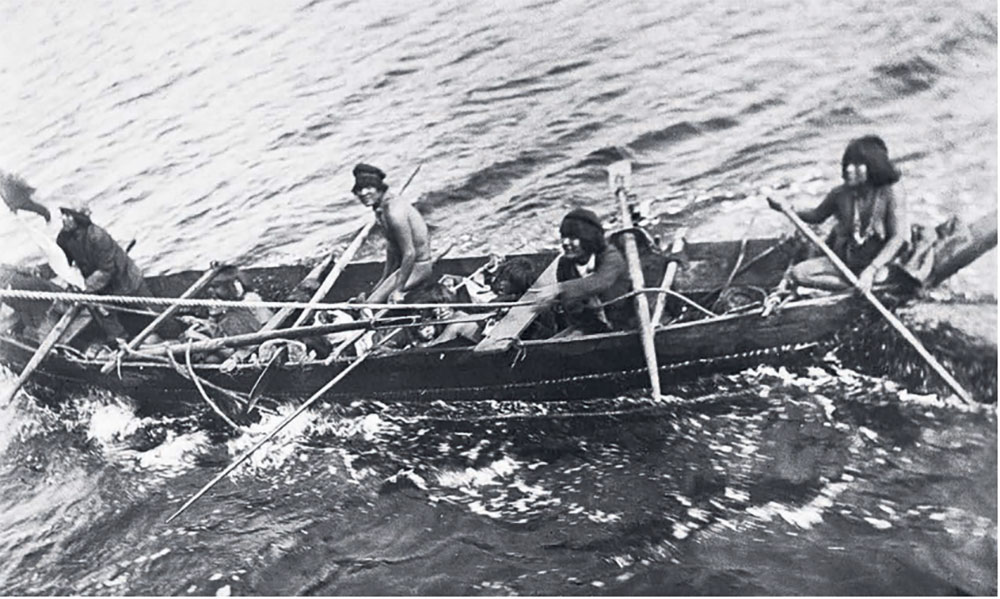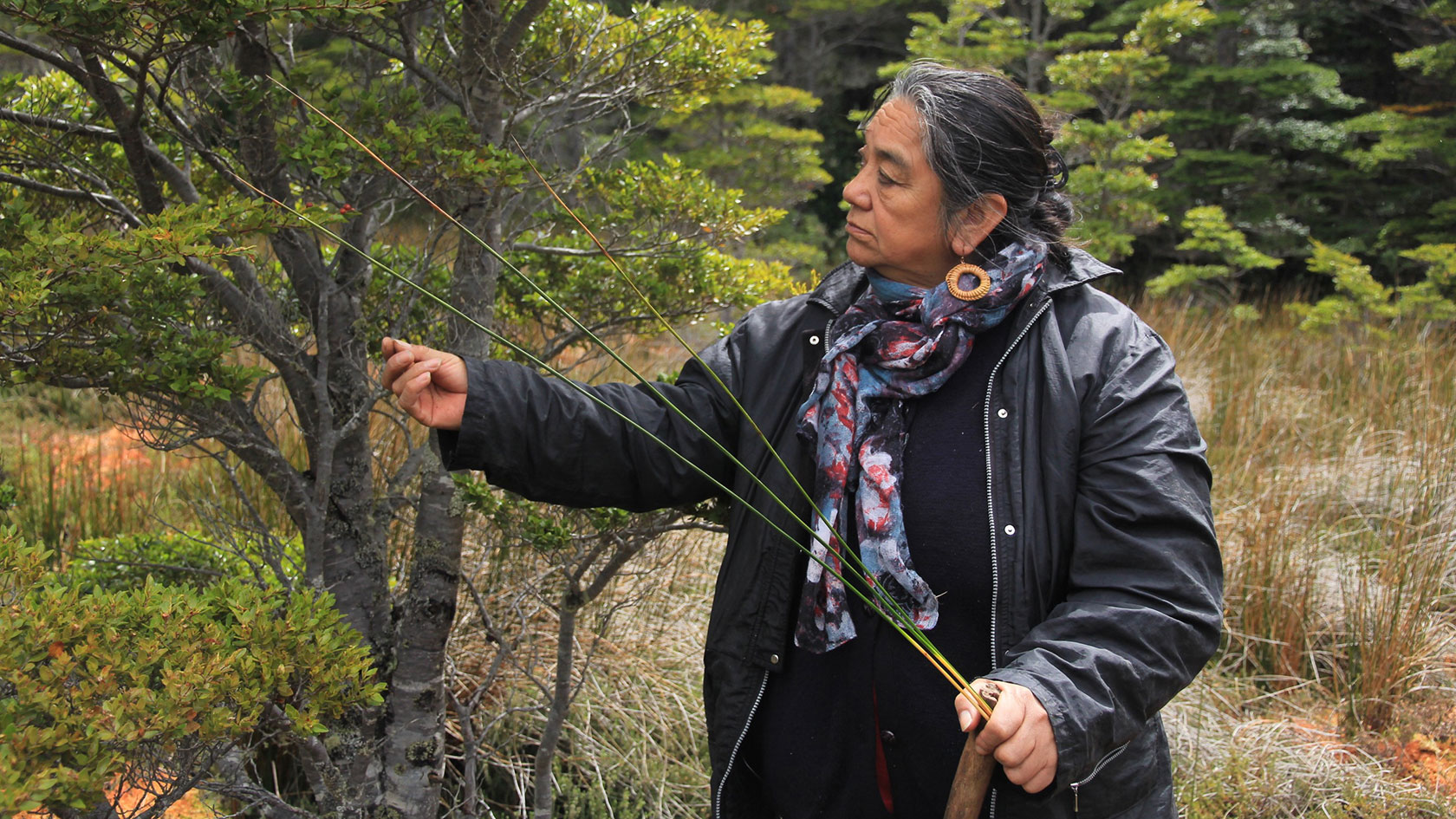Seafaring Nomads of Patagonia Turn the Page

“Hello, how are you?” is not something you’re likely to hear from a member of the Kawésqar. This lack of a traditional greeting is closely linked to the people’s original lifestyle as seafaring nomads. In canoes made of animal hide, they used to travel the fjords and channels of Patagonia to hunt, fish and harvest. Since the Kawésqar spent most of their time on the water, encounters with other people were few and far between. When their paths did cross, they didn’t exchange brief greetings, but sat down together to tell each other stories – stories that they had experienced in the weeks, months or even years that had passed without seeing another human face. “How was your navigation?” is what the Kawésqar asked to greet one another. “We have an oral culture. Spoken exchanges are very important to us,” emphasizes Francisco González, President of the Pueblo Kawésqar Foundation, during an interview at the Ethnographic Museum of UZH.
Excellent conservationists

Today, the Kawésqar people in Chile number around 500. Their nomadic lifestyle has mostly been replaced by a more urban life. Because the state of Chile wanted to provide schools, hospitals and churches to all of its citizens, the Kawésqar were forced to resettle in towns from 1920 onwards. For a very long time, the culture of the Kawésqar was suppressed by the government. González’s grandmother told her grandson tales of being beaten when she spoke Kawésqar with her friends at school. But today’s younger generation doesn’t want their culture and language to be lost. “Over centuries, our ancestors lived in close symbiosis with the region’s untouched wilderness, adapting their traditional lifestyle to the conditions around them. We want to preserve this,” says González.
Even today, nature continues to play a key role in the cultural, spiritual and economic lives of the Kawésqar. They don’t primarily view the flora and fauna around them as resources, but consider and respect them as equals. Their traditional knowledge about plants, animals, ecosystems and the weather has been passed on for generations and enables them to survive in this often rugged and remote region of the world. A Kawésqar delegation is now presenting some of this knowledge – and what is still known about it – at the Ethnographic Museum in Zurich.

The Mapuche in Chile are fairly well-known, but not that many people know about the Kawésqar.
Inhumane spectacle
But why Zurich? The Kawésqar and the city of Zurich are linked by an inglorious past. In 1881, 11 Kawésqar were abducted in Chile on behalf of Carl Hagenbeck, a noted merchant of animals, to be put on display in ethnographic shows, or “human zoos”, in cities across Europe and finally in Zurich. Five of these Kawésqar died here in 1882. The ethnographic shows were staged in a theater building in the Zürichberg neighborhood. The stage featured an open fire around which the “savages from the Tierra del Fuego islands” were forced to gather and act as naturally as possible. But the group would soon fall ill, and by March five of them had succumbed to measles and pneumonia. In the end, only four of the Kawésqar would return home alive. The bodies of the deceased were brought to the Institute of Anatomy of UZH and later handed over to the Department of Anthropology, where they remained for well over a century.
In January 2010, the University of Zurich returned the remains to descendants in Chile. This harrowing chapter of history was brought to light by the Zurich author Rea Brändle, who wrote about the case in great detail in her 1996 book Wildfremd, Hautnah: Völkerschauen und Schauplätze Zürich 1880–1960.
New encounters
As the representative of a Kawésqar delegation, Francisco González now wants to confront the troubling history by creating something new. The Kawésqar people are staging an exhibition and a series of workshops and talks to present their diverse culture to the Zurich public and enter into a dialogue. UZH’s Ethnographic Museum decided to step up and support their plans. “We had to improvise a little, but managed to design and realize the exhibition in a short period of time,” says Maike Powroznik, a curator at the museum.
The fascinating exhibition was put together with the support of the Chilean embassy in Bern and has garnered an extraordinary amount of interest, from the people of Zurich as well as the media. For this, Francisco González is very grateful. “The Mapuche in Chile are fairly well-known, but not that many people know about the Kawésqar. Maybe this will now change and the attention we’re getting might lead to more recognition and support back home in Chile,” he says.
The exhibition will be open again between 29 August and 3 September, with various workshops and talks available to the public. While crossing the rushes over and under each other during a traditional basket weaving workshop, for example, visitors can strike up a conversation with the Kawésqar – as is their tradition, no “hello, how are you?” required.